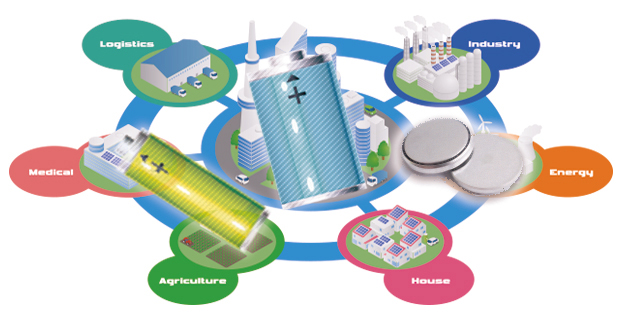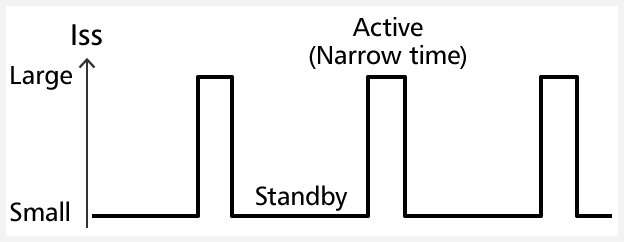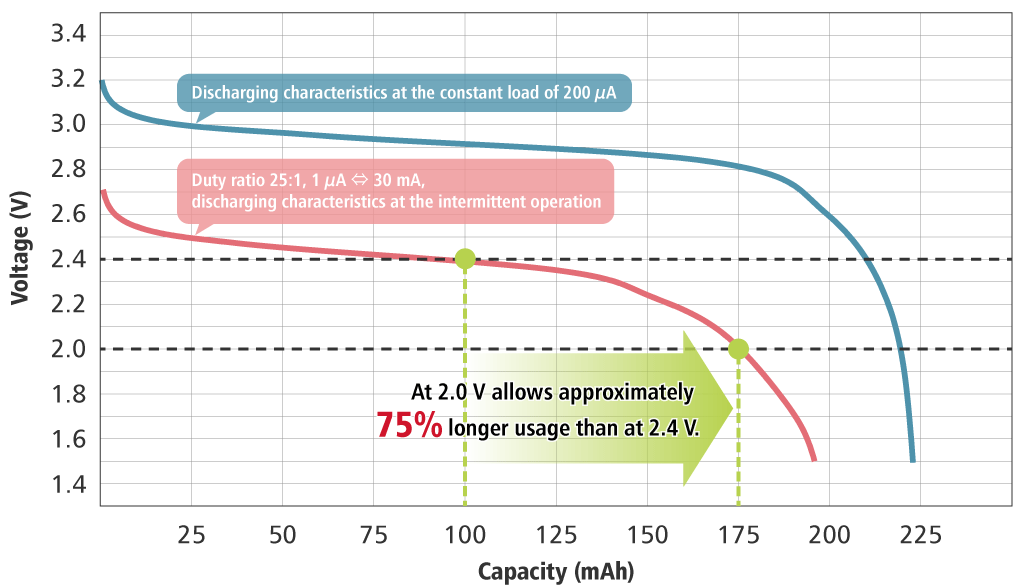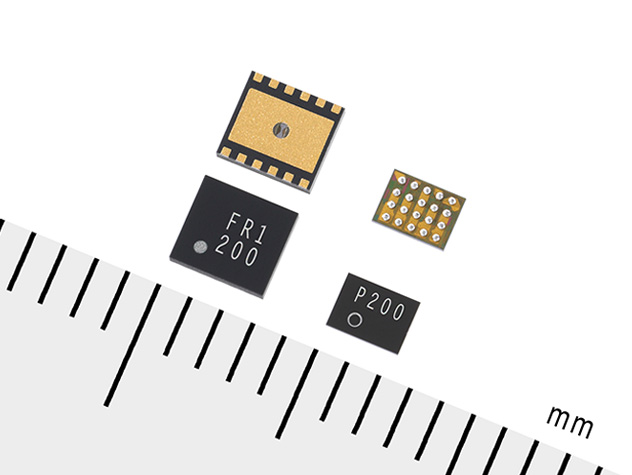Supporting your IoT system construction
Ultra-low supply current
Supporting your IoT system construction
Power management IC contributes to battery life
The way to extend the battery life of IoT devices?
Generally IoT devices are composed of sensors, microcomputers, and communication ICs. Power management ICs are necessary in order to supply power to these components.
The battery capacity needs to be large enough to extend the battery life of IoT devices, but the space and the weight of IoT devices are limited.
In order to extend the battery life and to maintain the miniaturization and light weight of IoT devices, it is necessary to set small supply current as much as possible.

Achieves a long service life of battery with a nano-order low supply current
Nisshinbo Micro Devices' low supply current power management IC for IoT devices achieves very small supply current such as several hundreds of nA at no operation and a few to tens of nA at Standby mode.
If the current consumption is a few mA at Active mode, and around a few µA at Standby mode, Nisshinbo Micro Devices's Nano-order supply current IC contributes to reduce the whole system power consumption.
Battery-life calculating tool
Inputting the following five parameters enables to simply calculate and provide an indication of the battery life.
- Battery capacity
- mAh
- Current at intermittent operation
- μA
- mA
- Time of the intermittent operation
- At standby s
- At active ms
- The battery lasts
- days.
The battery life varies by temperature, humidity, and a type of battery. This is an estimation under an ideal environment.

A lower-limit value of input voltage affecting the battery life
Other than the supply current, the battery life is highly affected by the lower-limit value of input voltage. Since the battery voltage gradually decreases while the battery is being used, the battery can be used longer as the lower-limit value of the input voltage is low.
As an example, discharging characteristics of button cell (CR2032) indicate the following characteristics having voltage drop with gradient. IoT devices often operate intermittently; the following characteristics in red line indicate a strong gradient of voltage drop due to the pulse load is applied on the button cell.

Discharging characteristics of button cell (CR2032)
Ex.) Power management IC, RP512
As for the RP512, the lower-limit value of input voltage is 2.0 V. The battery can last 75% longer than the 2.4 V-product at the intermittent operation using button cell.
The consideration of the lower limit value of input voltage is also important as well as the supply current for longer battery life.
Ultra-low supply current DC/DC converter and voltage regulator
RP604 Series
The RP604 is a buck-boost DC/DC converter IC for IoT devices that achieves ultra-low quiescent current and miniaturization. Input voltage: 1.8 V to 5.5 V, output voltage: 1.6 V to 5.2 V, and maximum output current: 300 mA at buck.
Since it is a buck-boost type, the boost operation enables the continuous battery use even if a battery voltage drops below the system use voltage. The flatted output voltage prevents instantaneous stop of system devices by facilitating a system design and supporting a rapid power voltage drop.
We highly recommend our power management IC with ultra-low supply current for your IoT devices.
| Product Name | Function | IQ | IOUT | VIN |
|---|---|---|---|---|
| RP511 | Low Quiescent Current Buck DC/DC Converter with Synchronous Rectifier | 300 nA | 100 mA | 2.0 V to 5.5 V |
| RP512 | Low Quiescent Current Buck DC/DC Converter with Synchronous Rectifier | 300 nA | 300 mA | 2.0 V to 5.5 V |
| RP517 | Low Output Voltage Low Quiescent Current Buck DC/DC Converter with Synchronous Rectifier | 300 nA | 300 mA | 1.8 V to 5.5 V |
| RP604 | Low Quiescent Current Buck-Boost DC/DC Converter with Synchronous Rectifier | 300 nA | 300 mA | 1.8 V to 5.5 V |
| NC4650 | Ultra-Low Quiescent Current Boost Switching Regulator with Low Ripple Mode | 70 nA | 300 mA @Vin=3.0V, Vout=5.0V |
0.6 V to 5.5 V |
| RP118 | Low Supply Current Voltage Regulator (LDO Regulator) | 200 nA | 100 mA | 1.7 V to 5.5 V |
| NR1620 | 0.4V Output & Ultra-Low Supply Current Voltage Regulator | 400 nA | 150 mA | 2.4 V to 5.5 V |
IQ: Operating Quiescent Current








